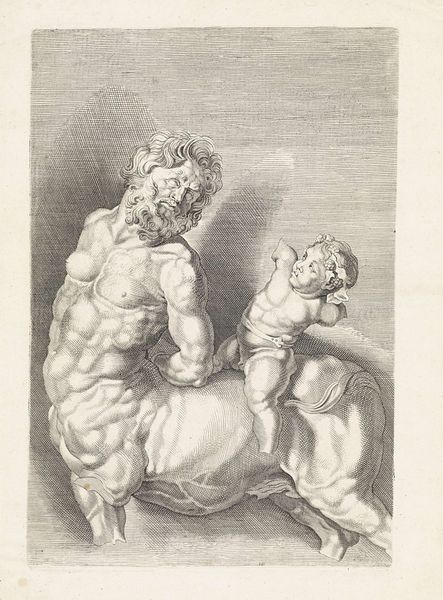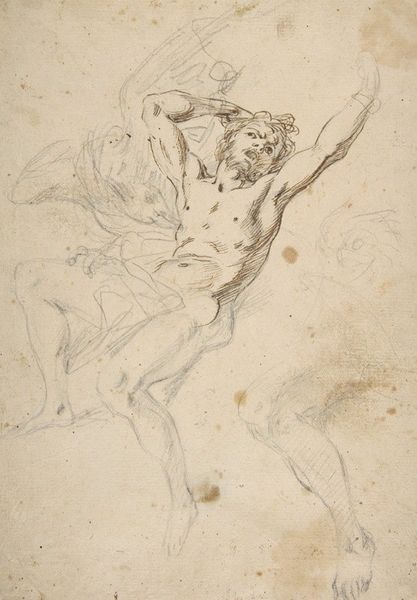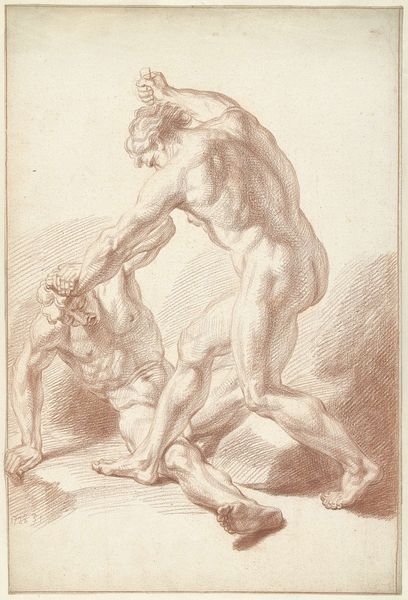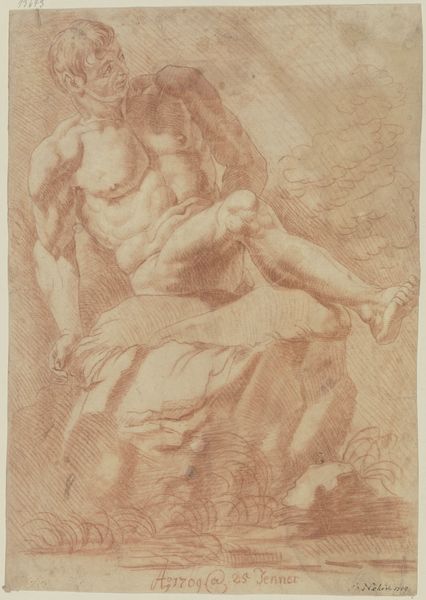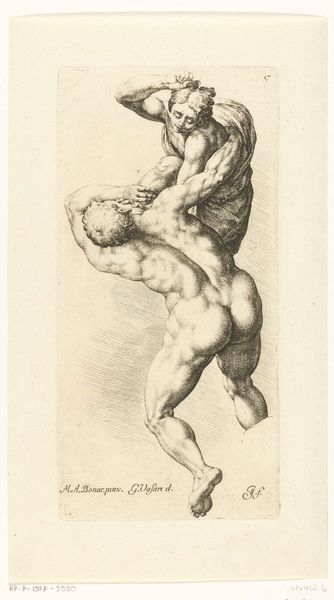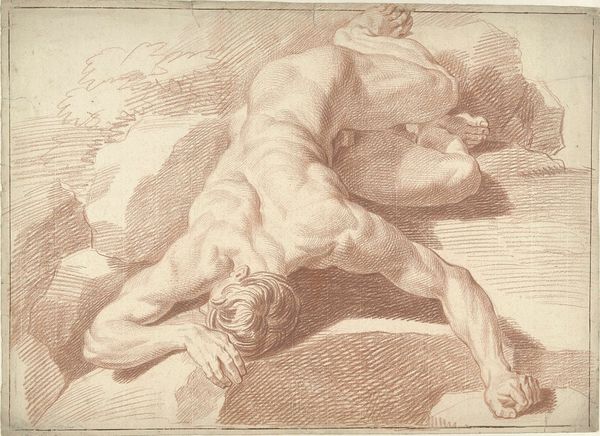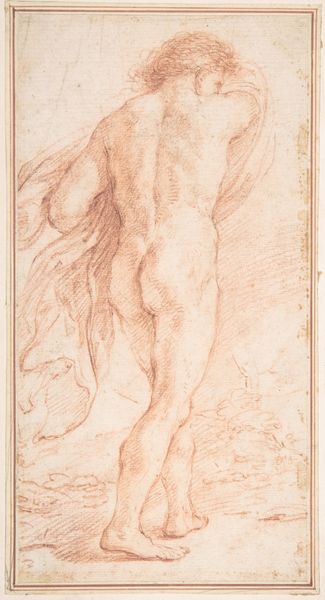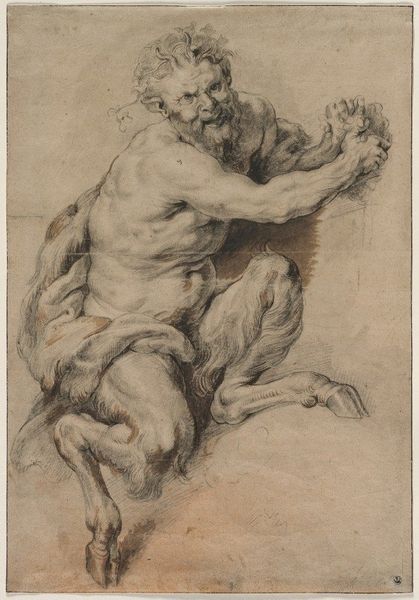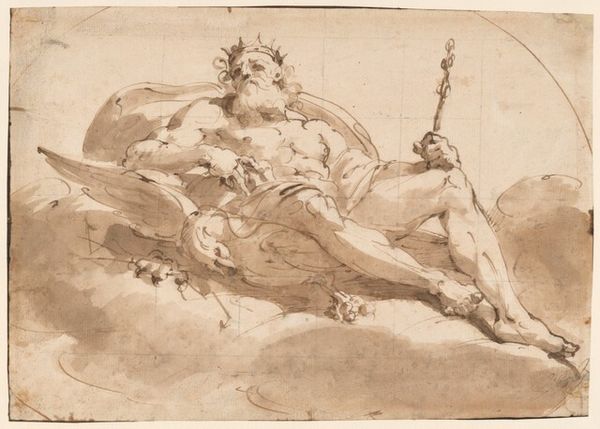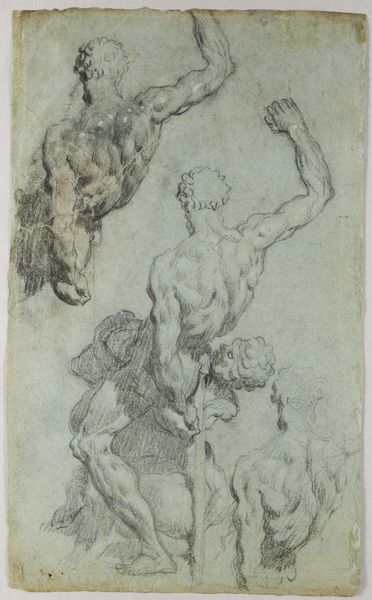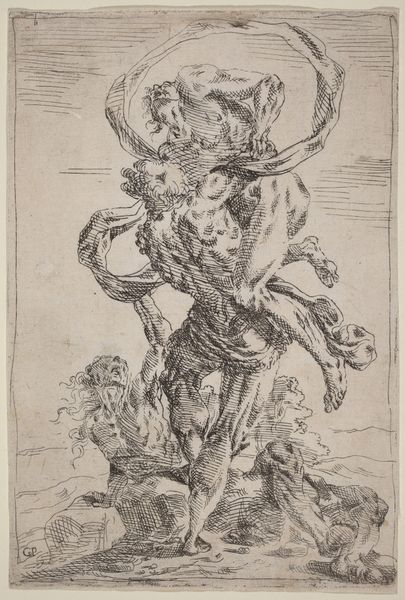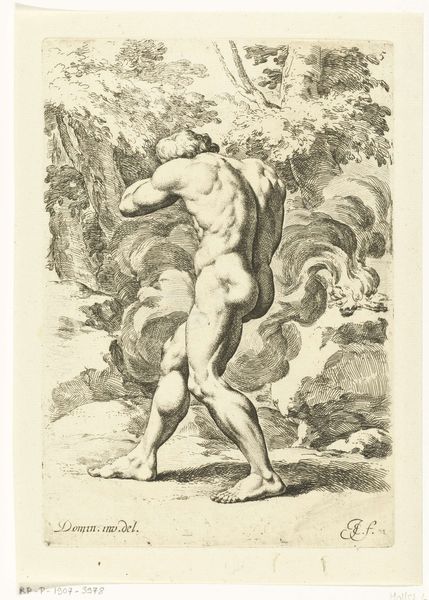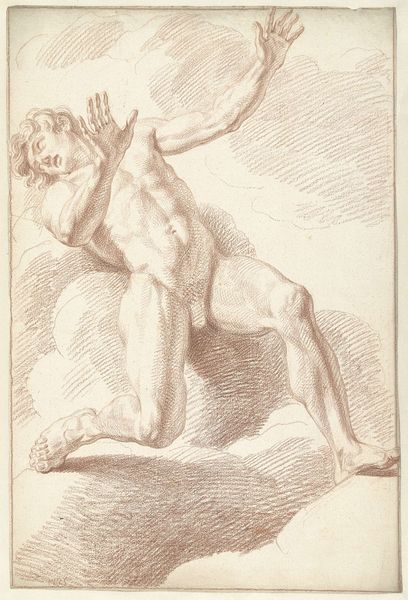
Copyright: Public Domain: Artvee
Curator: What strikes me immediately is the tonal range; the subtle gradations give such volume. Editor: Here we have "A Satyr Teased by Two Putti," a drawing by Jean-Honoré Fragonard, created circa 1774 to 1780, rendered in ink, charcoal, and pencil. The contrast feels rather…theatrical. Curator: It is. I think Fragonard is using line and wash to create movement, but he's also cleverly deploying his restricted palette, working through a range of earth tones to conjure a dreamlike scene. This period marks a shift where the availability and quality of drawing materials broadened to both professional artists and amateurs interested in sketching landscapes and natural scenes as a part of the Romantic Movement and “plein air” or outdoor sketching. Editor: True. And that velvety darkness around the satyr’s legs, set against the hazy cherubic figures, certainly guides the eye. Notice how the lightness emphasizes the delicate contours of the putti, playing off the darker, almost aggressive lines that define the satyr. It makes the satyr appear somewhat vulnerable. What do you read into the satyr's relationship to the putti, within the social context of this narrative? Curator: That's interesting; most see these pieces as playful—Fragonard often drew scenes of classical frolic. The teasing by putti—representations of innocent mischief—creates a scene that toes the line of the erotic, while maintaining the comedic. This dynamic hints at the consumption and entertainment for a refined 18th-century aristocratic audience—which reveals the decadence of the time. Editor: Agreed, and focusing on pure form again, look at the asymmetry within the work; the off-center positioning of the figures gives the piece an exciting imbalance. And what do you make of Fragonard’s choice of such earthy materials—the inks, the charcoal—do they evoke the primal nature of the satyr? Curator: Absolutely, the raw materials are crucial in underlining the primal themes, giving emphasis to the naturalistic and somewhat grotesque. Fragonard utilizes easily attainable materials. These would've also been readily accessible and not overly processed, reflecting an ethos centered on material and sensual realities. Editor: Indeed. It’s an image where material, composition, and social dynamics converge quite powerfully. Curator: Yes, the means of production mirror its cultural implications; how it’s made directly connects with why it's made and whom it's made for.
Comments
No comments
Be the first to comment and join the conversation on the ultimate creative platform.
